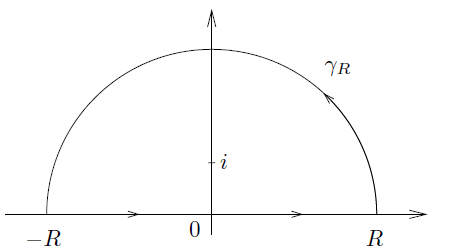How to bundle π and e in a single integral
Evaluate the following integral:
∫ − ∞ ∞ 1 + x 2 cos x d x .
This section requires Javascript.
You are seeing this because something didn't load right. We suggest you, (a) try
refreshing the page, (b) enabling javascript if it is disabled on your browser and,
finally, (c)
loading the
non-javascript version of this page
. We're sorry about the hassle.
1 solution
This was to long ago for me, but nice to see this kind of integration again. My feeling said the answer was something with a division with pi and e, but I chose the wrong answer lol.
Log in to reply
Well it seems like your intellect was good, but the luck wasn't. 😁
I thought this might need some coding. Thanks for the detailed solution. 👍
BTW, it'd be better if you put a link to the residue theory .
Is there any direct integration solution understandable to beginners.
Log in to reply
Well, the only way I can think of to do it using only basic tricks, would be to split the integrand into two (one with a root at (x-i) and the other at (x+i)) and then do a substitution y = x − i for the first one and similarly for the other. I warn you, this will be messy but I reckon feasible.
I think there is a mistake when you replace dz in the integral, the term Re^{i \theta} should not be in the denominator. And if I'm correct it is not clear why the integral vanishes, at least is not easy to prove.
Log in to reply
Yes, you are right. The contribution from the metric should be in the numerator. I also forgot to write d θ Thanks. This does not change the conclusion though. For large R, the numerator is of the scale ~R*e^(-R), and the denominator is ~R^2.
Why is cos(x) changed to e^ix?
Log in to reply
within the above integral, they are both the same, since the integrand 1 + x 2 s i n ( x ) is an odd function and thus vanishes over the interval [-R,R] ;) Another way to think about it: the LHS must equal the RHS which is real. So we equate the real parts of both sides (and so get the required result) while we ignore the imaginary parts since we are anyway not interested in them.
Simply take the real part of the integral to get the original problem. Obviously, the real part of e π is e π , so we are done.
Oh okay thanks for explaining.
There are a few ways to do this, but the fastest one is probably through complex analysis and residue theory:
Consider the integral: ∮ C 1 + z 2 e i z d z where z = x + i y ∈ C . C is defined as the (closed) semi-circle of radius R on the upper plane of the complex plane.
By the residue theorem, since ∀ R large enough, the pole of the integrand (namely z = i ) is inside our contour, while the other ( z = − i ) is not. Thus, we have:
I = ∮ C 1 + z 2 e i z d z = 2 π i [ i + z e i z ] ∣ ∣ ∣ ∣ ∣ z = i = e π
On the other hand, we can split our integral into two parts: integrate from − R to R (over the real-axis), then integrate over the semi-circle C'. In the later case, perform the change of variable z = R e i θ and obtain:
∫ C ′ 1 + z 2 e i z d z = ∫ 0 π e − i θ ( 1 + R 2 e 2 i θ ) R e i R ( cos θ + i sin θ ) d θ
Now, it is not hard to see that the integrand goes to zero as R → ∞ . In this limit, this integral thus vanishes and we are left with:
R → ∞ lim ∫ − R R 1 + x 2 e i x = ∫ − ∞ ∞ 1 + x 2 e i x = e π as required.